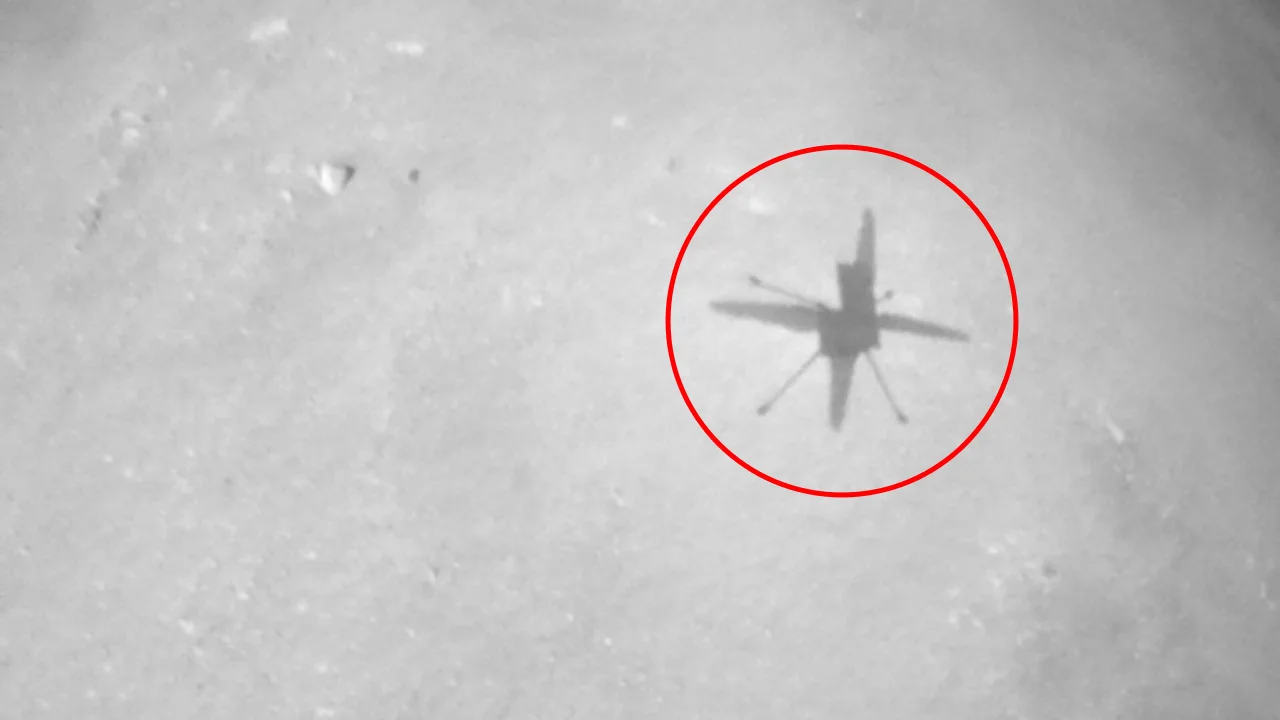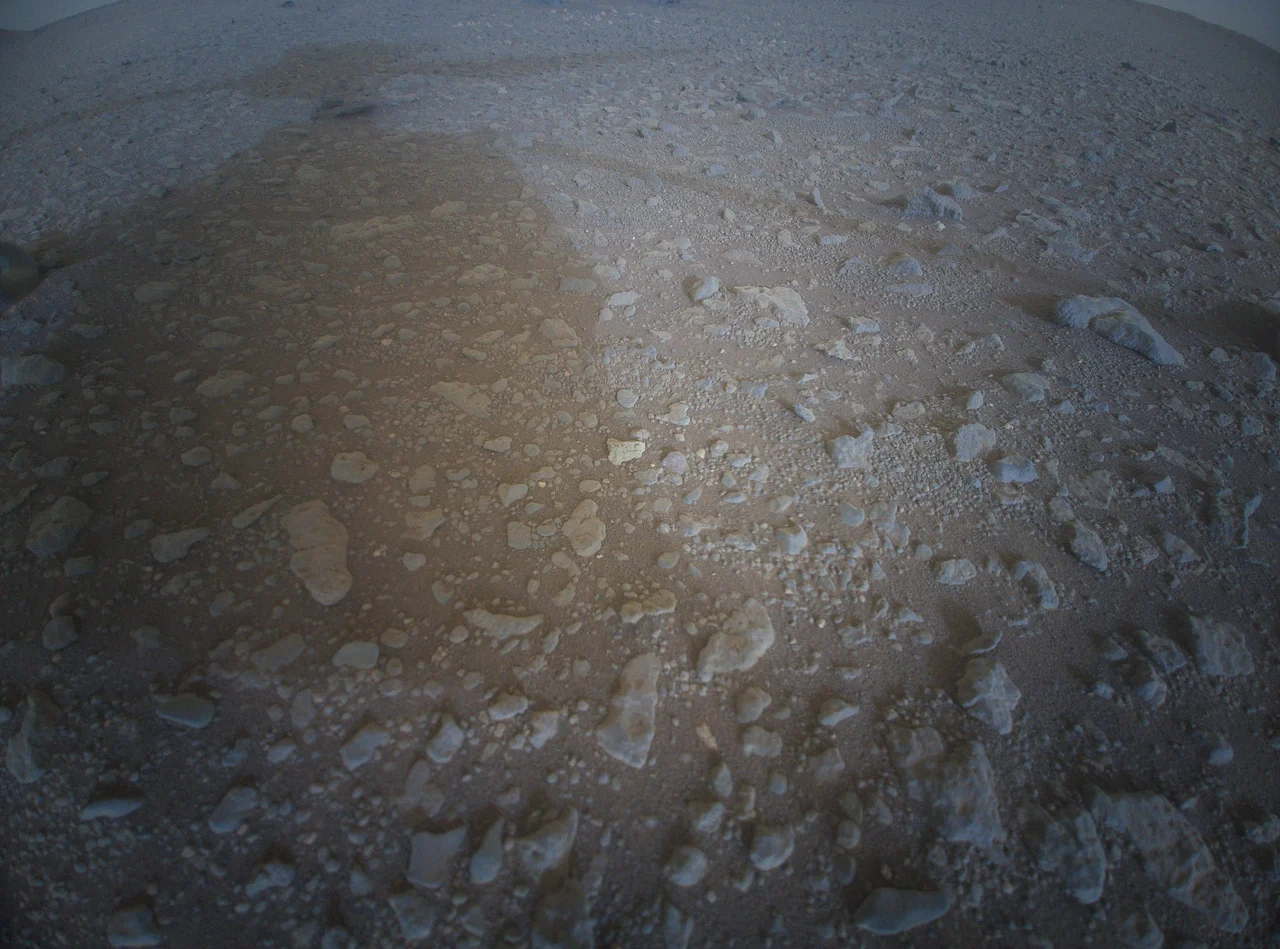
NASA's Ingenuity Mars helicopter makes farthest, fastest flight yet
This tiny drone is revolutionizing the exploration of Mars.
NASA's Mars helicopter is setting new records. On one of its most recent flights, Ingenuity flew farther and faster than it had ever gone before.
Just over a year since the Ingenuity helicopter first took to the Martian skies back in April 2021, the tiny drone has now completed 28 flights, travelling a total of nearly 7 kilometres. Given that not too long ago powered flight was considered to be impossible in Mars' extremely thin atmosphere, those facts — on their own — are very impressive!
However, during Ingenuity's 25th flight, the mission team pushed its limits to their farthest point so far. On April 8, 2022, the helicopter flew a total of 704 metres, at a top speed of 5.5 metres per second (nearly 20 km/h). That beats out its previous distance and speed records, set during its 9th flight on July 5, 2021, of 625 m and 5.0 m/s.
Watch below: Ingenuity captures video of its farthest, fastest flight to date
According to NASA: "The first frame of the video clip begins about one second into the flight. After reaching an altitude of 33 feet (10 metres), the helicopter heads southwest, accelerating to its maximum speed in less than three seconds. The rotorcraft first flies over a group of sand ripples then, about halfway through the video, several rock fields. Finally, relatively flat and featureless terrain appears below, providing a good landing spot. The video of the 161.3-second flight was speeded up approximately five times, reducing it to less than 35 seconds."
Most of Ingenuity's flights, thus far, have been short hops by comparison, covering distances ranging between 100 m to 450 m. It has also taken a much more leisurely pace during these flights, of between 5 to 15 km/h. Reaching new limits for distance and speed are really putting the helicopter through its paces. This is also proving to NASA what they can accomplish on future missions. It could be that every rover or lander that touches down on the Red Planet from now on could include its own autonomous drone to assist in exploration.

The mid-afternoon shadow of NASA's Ingenuity Mars Helicopter stretches out across the ground in Jezero Crater in this image, acquired by the helicopter's high-resolution colour camera on May 26, 2022 (Sol 449 of the Perseverance rover mission). Credit: NASA/JPL-Caltech
A SCARY MOMENT
The weather is taking its toll on the tiny drone.
In early May, the Perseverance rover lost contact with Ingenuity. A scary moment for the team, for sure.
From their latest update, they believe that as winter sets in for Jezero Crater, temperatures dipping down to -80°C, along with the increased amount of dust in the air, appears to be causing the helicopter to suffer power brownouts during the night.
Ingenuity charges its batteries via a solar panel mounted above its rotors. The resulting electricity powers its flight, as well as its cameras, computer, and communications. It also runs the heaters used to keep its electronics at a reasonably stable temperature throughout the night.

This diagram of Ingenuity highlights the various components of the helicopter. Credit: NASA/JPL-Caltech
Right now, the added dust is preventing Ingenuity from fully charging its battery. At the same time, the heating requirements to keep the electronics warm during the night are putting more demands on its available power.
When the battery is drained, the electronics are subjected to those frigid -80°C temperatures. This is known as cold soak. And while a cold soak is typically used as a test method, to determine the resiliency of a mission's components, it is not something that you want to subject your spacecraft's electronics to on a regular basis!
According to the May 27 Ingenuity update: "Cold-soaking electronics is believed to have caused the end of the Opportunity and Spirit Mars rover missions."
The team seems cautiously optimistic that the Ingenuity’s electronics can survive through the winter. Once they’ve determined that it has recovered from the loss of communication, they hope to send it on its 29th flight soon.
That will take the helicopter on a short trip to the southwest of its current location, putting it closer to Perseverance while the rover samples the river delta.
(Thumbnail courtesy NASA/JPL-Caltech)











